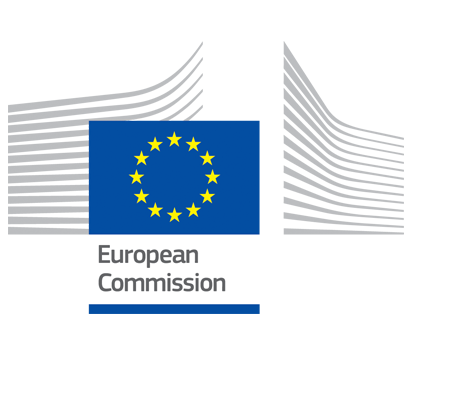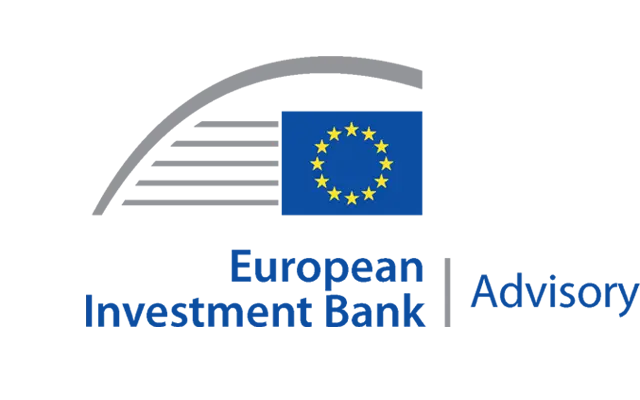Frequently asked questions
Any Questions? They might have been asked before, here are some basic answers
fi-compass is a platform for advisory services on financial instruments under the European Structural and Investment Funds (ESIF). It is provided by the European Commission in partnership with the European Investment Bank.
EU Member States can use the European Structural and Investment Funds (ESIF) to support development in a comprehensive way by investing for instance in businesses, research and development, infrastructure, employment and training, agriculture, forestry and fisheries development, with the overall objective to improve the quality of life of EU citizens.
Some €450 billion of ESIF are available for the Member States and their regions in the period 2014-2020. Cohesion, rural development and maritime policies combined are the biggest area of EU investment for smart, sustainable and inclusive growth.
The ESIF family is composed of five distinct funds:
1. European Regional Development Fund (ERDF)
2. European Social Fund (ESF)
3. Cohesion Fund (CF)
4. European Agricultural Fund for Rural Development (EAFRD)
5. European Maritime & Fisheries Fund (EMFF)
How is ESIF implemented?
The investment of ESIF resourcesis jointly managed by the European Commission and the EU Member States (shared management), in accordance with the principle of subsidiarity.
Partnership agreements between the European Commission and individual EU countries set out the national authorities' plan on how to use funding from the European Structural and Investment Funds between 2014 and 2020. They outline each country's strategic goals and investment priorities, linking them to the overall aims of the Europe 2020 strategy for smart, sustainable and inclusive growth.
Once the partnership agreements have been adopted, the Commission and the national authorities agree on programmes setting out the priorities for each country, region or policy area concerned.On this basis, the EU countries administer the Funds on a decentralised basis. Each Fund's website gives further information about the funding available and the application procedure.
The rules covering all five EU Structural and Investment Funds are set out in the Common provisions regulation. Further regulations set out specific rules for each fund.
Legal basis:
- Common Provisions Regulation (CPR)
Regulation (EU) No 1303/2013 [PDF]
See also additional declarations published in the Official Journal [PDF] - Cohesion Fund Regulation (CF)
Council Regulation (EU) No 1300/2013 [PDF] - European Agricultural Fund for Rural Development Regulation (EAFRD)
Regulation (EU) No 1305/2013 [PDF]
The European Regional Development Fund (ERDF) aims to strengthen economic and social cohesion in the European Union by correcting imbalances between its regions. It focuses its investments on several key priority areas:
- promoting business investment in R&I;
- extending broadband deployment and the roll-out of high-speed networks and developing ICT products, services and e-commerce;
- supporting the capacity of SMEs to grow and to engage in innovation processes, including developing new business models;
- promoting the production and distribution of renewable energy, of energy efficiency and renewable energy in enterprises, in public infrastructure and housing;
- investments for adaptation to climate change;
- investing in the waste and water sectors;
- improving the urban environment, including regeneration of brownfield sites;
- supporting industrial transition towards a low-carbon economy; and
- supporting multimodal and environmentally-friendly transport and regional mobility.
For further information please see:
The European Agricultural Fund for Rural Development (EAFRD), which is the funding instrument of the second Pillar of the Common Agricultural Policy of the European Union and one of the European Structural and Investment Funds, aims at strengthening the EU’s agriculture, forestry sector and rural areas in general.
The EAFRD has a total budget of over €96 billion for the period 2014-2020. This support is provided to agriculture, forestry and environment/ natural resources management as well as to the sustainable development of rural economy.
For further information please see:
Legal basis:
Regulation (EU) Nº 1303/2013 of the European Parliament and of the Council laying down common provisions on the European Regional Development Fund, the European Social Fund, The Cohesion Fund, The European Agricultural Fund for Rural Development and the European Maritime and Fisheries Fund covered by the Common Strategic Framework and laying down general provisions on the European Regional Funds, the European Social Fund and the Cohesion Fund repealing Regulation (EC) Nº 1083/2006 [PDF]. The ‘Common Provisions’ Regulation provides for a shared set of basic rules applying to all structural instruments including the EAFRD.
Regulation (EU) Nº 1305/2013 of the European Parliament and of the Council on support for rural development by the European Agricultural Fund for Rural Development (EAFRD) [PDF]. This is the basic act that sets out the specific rules relating to the EAFRD for rural development programming.
Regulation (EU) Nº 1306/2013 of the European Parliament and of the Council on the CAP Horizontal Regulation provides the financial management rules for the two CAP funds, the European Agricultural Guarantee Fund (EAGF) which finances market measures and direct payments, and the EAFRD which finances support to rural development. It brings together the rules on cross compliance, farm advisory systems and monitoring and evaluation of the CAP
Regulation (EU) Nº 1310/2013 of the European Parliament and of the Council laying down certain transitional provisions on support for rural development by the European Agricultural Fund for Rural Development (EAFRD). This regulation defines transitional rules in order to bridge the gap between two multi-annual programming periods.
The ESF is Europe’s main instrument for supporting jobs, helping people get better jobs and ensuring fairer job opportunities for all EU citizens. It works by investing in Europe’s human capital – its workers, its young people and all those seeking a job.
It focuses investments on the following thematic objectives:
- promoting employment and supporting labour mobility;
- investing in education, skills and life-long learning;
- promoting social inclusion and combating poverty; and
- enhancing institutional capacity and efficient public administration.
For further information please see:
For further information please see:
EMFF Rules and RegulationsLegal basis:.
- Regulation (EU) No 1303/2013 of the European Parliament and of the Council of 17 December 2013 laying down common provisions on the European Regional Development Fund, the European Social Fund, the Cohesion Fund, the European Agricultural Fund for Rural Development and the European Maritime and Fisheries Fund and laying down general provisions on the European Regional Development Fund, the European Social Fund, the Cohesion Fund and the European Maritime and Fisheries Fund and repealing Council Regulation (EC) No 1083/2006
- Regulation (EU) No508/2014 of the European Parliament and of the Council of 15 May 2014 on the European Maritime and Fisheries Fund (EMFF).
Multi-region assistance (“MRA”) comprises advisory services and guidance that is in principle applicable to at least two Member States and types of Financial Instruments.
Horizontal assistance comprises advisory services and guidance that is in principle applicable to all Member States and types of financial instruments.
Objectives supported by each ESI Fund, covering Europe 2020 priorities for Smart, Sustainable and Inclusive Growth (see Article 9 of the CPR):
- strengthening research, technological development and innovation;
- enhancing access to, and use and quality of, ICT;
- enhancing the competitiveness of SMEs, of the agricultural sector (for the EAFRD) and of the fishery and aquaculture sector (for the EMFF);
- supporting the shift towards a low-carbon economy in all sectors;
- promoting climate change adaptation, risk prevention and management;
- preserving and protecting the environment and promoting resource efficiency;
- promoting sustainable transport and removing bottlenecks in key network infrastructures;
- promoting sustainable and quality employment and supporting labour mobility;
- promoting social inclusion, combating poverty and any discrimination;
- investing in education, training and vocational training for skills and lifelong learning;
- enhancing institutional capacity of public authorities and stakeholders and efficient public administration.
Handbooks are concise manuals or references book providing specific ‘how to’ information or instruction to address the needs of the Member States. They aim to help Member States to better understand the regulatory and operational requirements for establishing and managing ESIF financial instruments and provide general, but practical advice on the approach to take with regard to particular questions and/or phases in the implementation process.
Factsheets provide information specific to an issue/policy in a quick and efficient manner. Factsheets aim to be clear, concise, reliable and easy to read. Each factsheet builds on official EU rules and regulations, expert knowledge from EC, Member States, other stakeholders and EIB Group experience.
Case studies showcase examples of good practice. A good practice is a method, a technique, a project or an initiative that has consistently shown results superior to those achieved with other means or by other projects and initiatives, and thus it is used as a benchmark. Case studies may be prepared to analyse a specific financial instrument or research thematic issues of interest across a number of financial instruments.
Except where otherwise stated, re-use, downloading, reproduction and distribution in whatever form and by whatever medium (including Internet) for whole or part for personal use or for further non-commercial dissemination of documents or information available on this website are authorised subject to the condition that due acknowledgement is given as follows:
to the appropriate Copyright holder:
© European Investment Bank [year (…)]
and to the website source:
- the URL: http://www.fi-compass.eu
- the fact that the documents and information have been provided free of charge by the fi-compass project.
All logos and trade marks are excluded from the above-mentioned general permission.
The permission granted above does not extend to any textual or artistic material on this site which is identified as being the Copyright of a third-party. In these circumstances, authorisation to reproduce such material must be obtained from the appropriate Copyright holders.
Links to the pages on this site are permitted provided that the browser window does not contain any information other than that of the page of the present site to which the link is made and its address and none of the information provided on this site is modified.
fi-compass reserves its right to modify this Copyright notice at any time. Any modification about this Copyright notice will be updated in this web site to inform users.
Yes, please click here.
Yes, you can. Please click here.
You will receive a confirmation after having registered and only that confirmation will allow you to participate in the event.
Yes, it is free of charge.
Every training has a specific content focus clearly explained in the description available in the event page. Please check it carefully.
No. Every offer has a specific target group clearly explained in the description available from fi-compass learning page. Please check it carefully.

